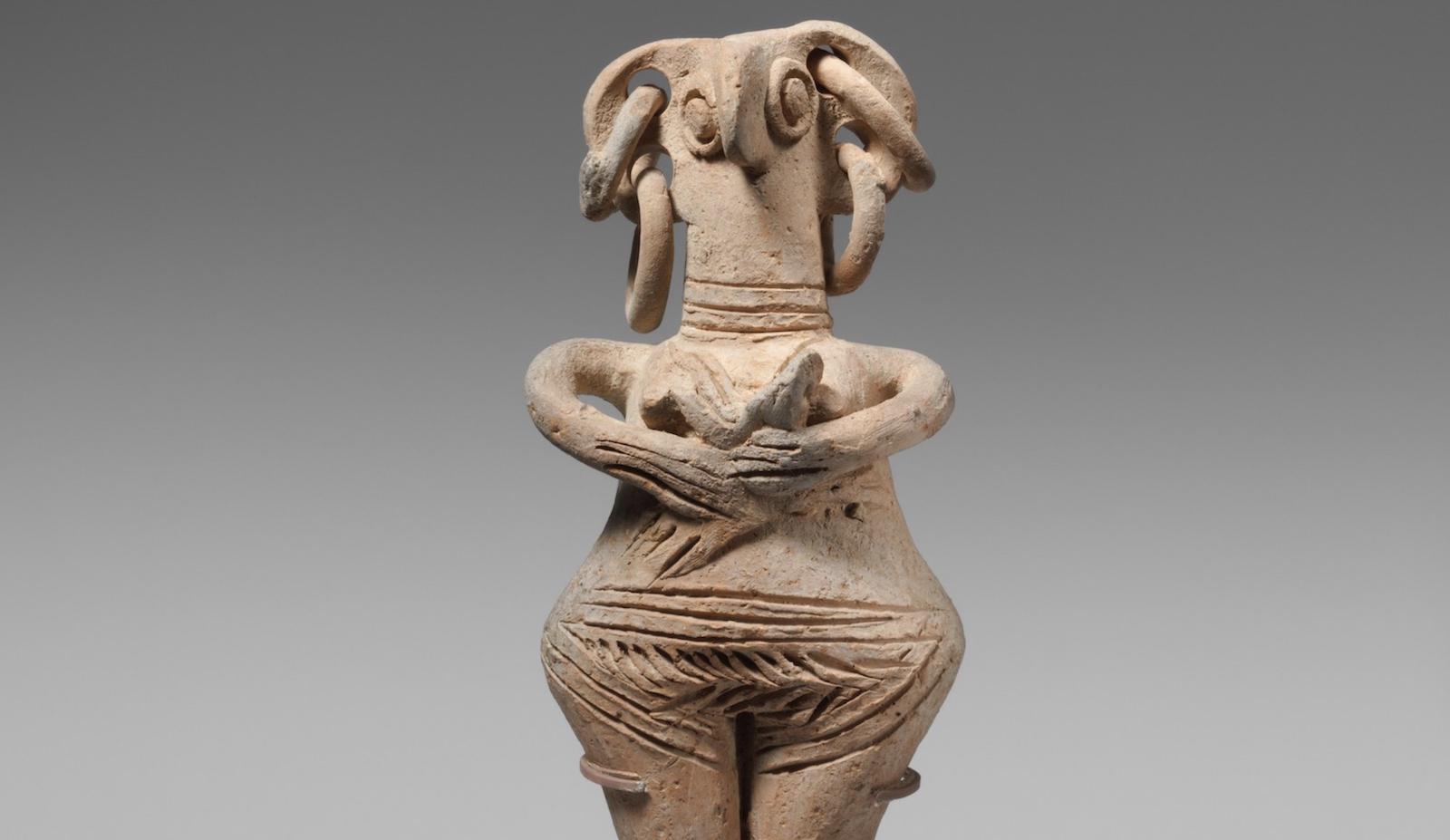
The term prehistoric refers to the period of early human history that occurred before extant, written records. Of course, writing appeared at different times in the archeological record, in different places across the globe. This is due to many factors outside of the pace of cultural advancement such as the impacts of climate on the rate of artifact survival or the destruction of artifacts by invading forces such as European colonizers.
This story particularly focuses on prehistoric sculptures from across the globe—which are often rather small and tend to depict humans, animals, or some combination of the two. The earliest sculptures we currently know of date back to around 30,000 B.C.
All of the sculptures presented here are currently owned and housed by The Metropolitan Museum.
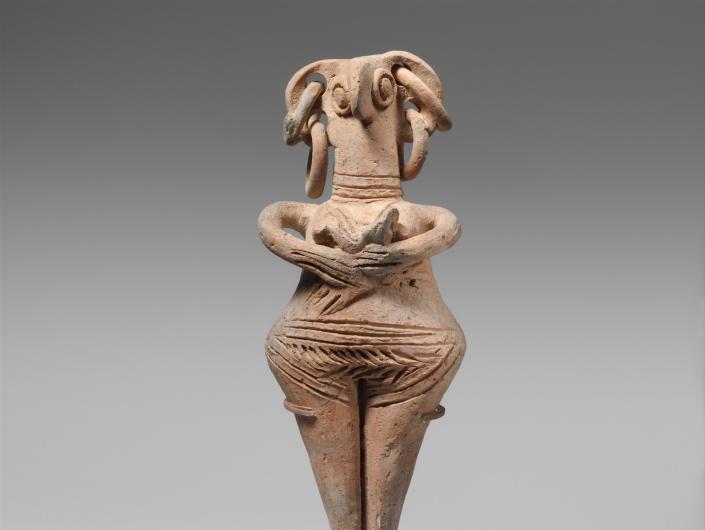
Made by the Cypriot culture in the Late Cypriot II period, ca. 1450–1200 B.C. Height is 8 3/16 in (20.80 cm).
The Cypriots, based in modern-day Cyprus, produced a bevy of imaginative ceramic objects—from zoomorphic vessels to hollow figurines such as this one—especially in the Bronze Age. A reminder of fertility for this culture, these female figurines with emphasized genitals were particularly common and, in this period, were often placed in tombs.
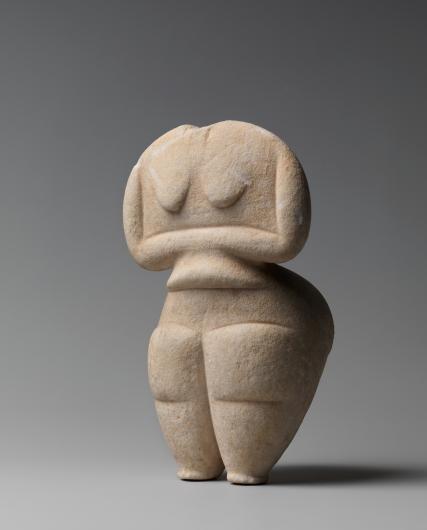
Made by the Cycladic culture in the Final Neolithic period, 4500–4000 B.C. Height is 8 7/16 in (21.4 cm).
The Cyclades, a group of Grecian Islands, served as a home to the people of the Early Cycladic culture and a rich array of mineral resources, including some of the world's most precious marble. There are two typical female figurine types associated with this culture—idealized and naturalistic. This artifact is one of the former. Having noticed the remarkable consistency of proportion in this type of Cycladic figurine, many historians now believe that they were planned with a compass.
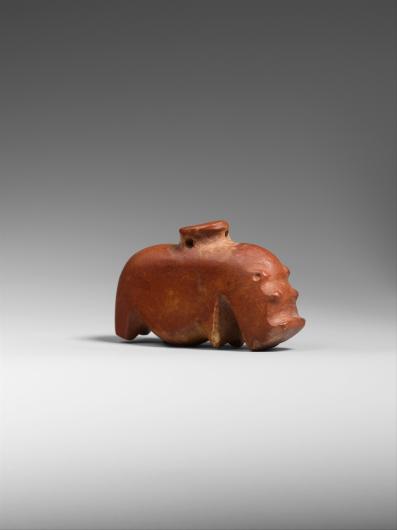
Made in Egypt during the Predynastic period, Naqada I–early Naqada II, c. 3700–3450 B.C. Measures 7.4 x 4.4 x 2.2 cm (2 15/16 x 1 3/4 x 7/8 in).
The purpose of this predynastic sculpture of a pregnant hippo, a rare feature of such figurines of this period and region, is still unclear to historians. Even so, most feel the amulet was most likely either a symbol of fertility to be used within the context of death—for example, to represent the rebirth of the dead—or that it was an early visualization of a hippo goddess, a deity commonly associated with the protection of pregnant women.
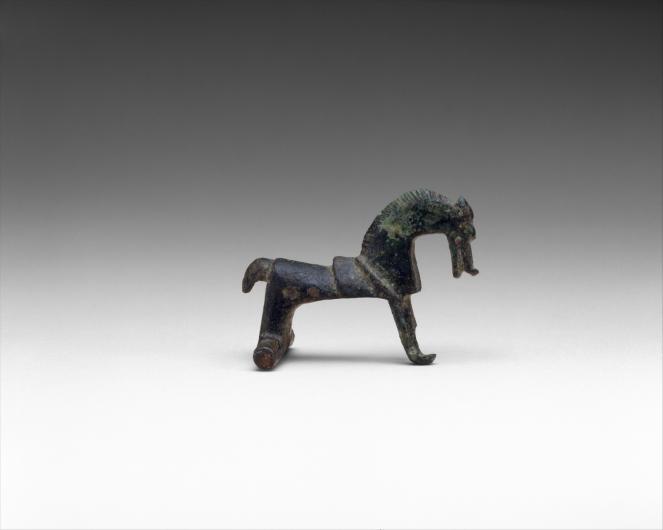
Made in central Europe by the Celtic culture, 650–550 B.C. Measures 1 5/16 x 1 13/16 x 1 1/4 in. (3.3 x 4.6 x 3.1 cm).
Although only a small group of Celtic animal brooches from the Iron Age remain extant, they provide a fascinating insight into the values and methods of self-fashioning in prehistoric central Europe. In this period, it was rare to be able to own and care for a horse. As such, this brooch may have been a symbol of the wearer’s own power and prestige.
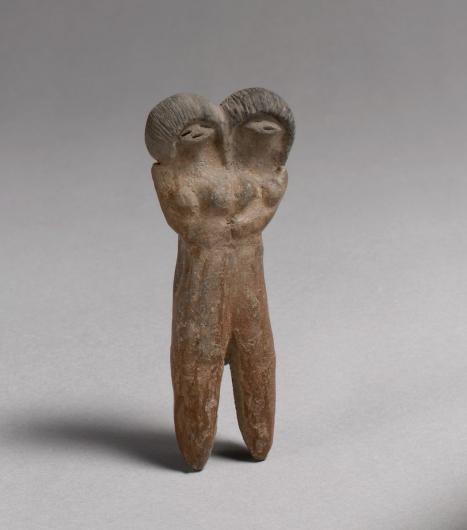
Made by the Valdivia culture in Ecuador, 2300–2200 B.C. Measures 3 1/2 × 5 1/2 × 3/4 in (8.9 × 14 × 1.9 cm).
Produced via the combination of separate slabs of clay, these two-headed sculptures were not uncommon across western South America. Although sometimes rendered with a combination of gendered traits, these statuettes are typically female and depict individuals at a variety of ages. Historians remain uncertain in regards to the purpose of these figurines but many believe they were most likely thought of as guardian spirits or fertility tokens.
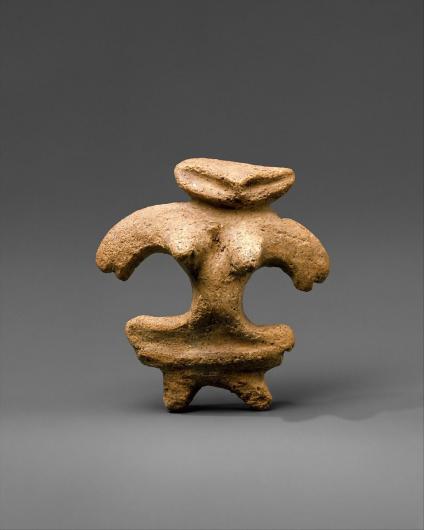
Made in Japan during the Final Jōmon period, c. 1000–300 B.C. Height is 2 1/4 in (5.7 cm).
Clay figurines of both people and animals were common in this period of modern-day Japan. Called dogū, many of these statuettes depicted a female figure, stylized to emphasize the hips and breasts.
Fascinatingly, dogū were often discovered broken and among trash or scattered about. Because of this, historians have postulated that dogū were used in healing ceremonies in which, after a physical ailment was transferred from an ill person to the figurine, the sculpture was destroyed or discarded.

Made in the Mount Hagen region of modern Papua New Guinea, c. 1500 B.C.– ?A.D. 1600. Measures 4 1/2 x 4 1/2 x 4 1/2 in (11.4 x 11.4 x 11.4 cm).
Though it is certain that this and other similar sculptures were created by a prehistoric culture once located in the highlands of New Guinea, little else is known about the object or the people who made it. Because neither this nor any similar stone statuettes have been excavated in controlled archeological circumstances, they are unable to be dated within the region’s 40,000 years of prehistory.
Still, the objects play an important role in the lives of contemporary indigenous groups such as the Enga. Often unearthed by erosion or foraging animals, the stones are seen by these groups today as the work of spirits.
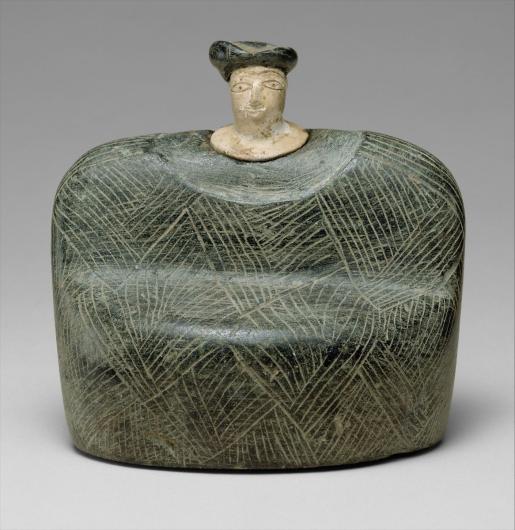
Made by the Bactria-Margiana Archaeological Complex culture during the Bronze Age, c. late 3rd–early 2nd millennium B.C. Measures 3 9/16 × 3 11/16 × 1 7/8 in (9 × 9.4 × 4.8 cm).
This is one of few sculptural objects found in the region of Western Central Asia—around modern day Afghanistan, Turkmenistan, and Uzbekistan—from the period between 3000 and 1000 B.C. Even so, there are a few of these seated female figures and they are all remarkably similar. Broadly shaped, they are all made of two materials, white limestone and either green chlorite or steatite. In nearby regions that likely had contact and participated in trade with this culture, similarly rendered female figures appear on seals. Many historians believe that these may depict royals.
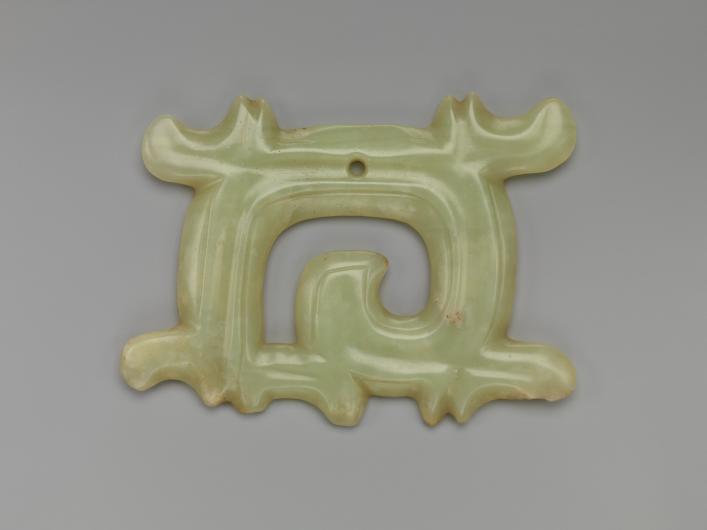
Made by the Hongshan culture during the Neolithic period, c. 3500–2000 B.C. Height is 2 7/8 in. (7.3 cm).
Because contemporary historians had known little to nothing about the Hongshan culture of Northeast China until recently, there is still much to be learned about this artifact and its purpose. Currently, due to the hole at the top center of the object, some believe it may be a type of ornament.
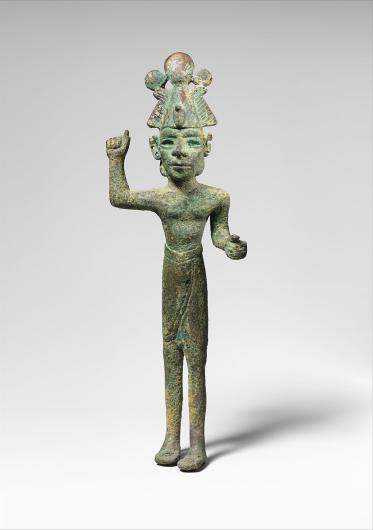
Made by the Canaanite culture in the late Bronze Age, c. 15th–14th century B.C. Measures 8 1/4 × 3 × 1 7/16 in (21 × 7.6 × 3.7 cm).
This figure depicts a deity associated with the prehistoric Canaanite culture of the Levant area—which roughly corresponds to contemporary Syria, Jordan, Israel, Palestine, and Lebanon. In this region, during the Late Bronze Age, relatively disparate regions became connected and began to influence one another. This much is visible in the artifact. Although the god depicted was local, the figure sports Egyptian-style adornments including an atef crown and a kilt.
Anna Claire Mauney
Anna Claire Mauney is the former managing editor for Art & Object. A writer and artist living in North Carolina, she is interested in illustration, the 18th-century, and viceregal South America. She is also the co-host of An Obsessive Nature, a podcast about writing and pop culture.![]()























